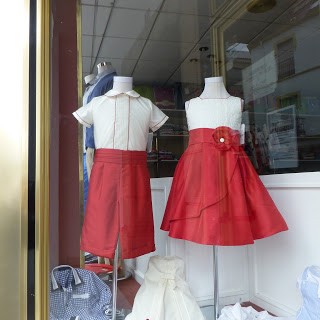 |
| Helston's honorable Furry Dance leader . |
The beauty of Cornwall and the town of Helston's ancient ongoing annual Flora Festival were an early impetus for our long-term travel plans. My Aunt Millie and Uncle Ed had traveled extensively in Cornwall in the 70s-90s and always talked fondly of this joyous and beautiful annual dance with its medieval roots. I wanted to see it, but also wanted to be in the area long enough to better understand Cornwall's rhythms, to be here long enough to hang out. So here we are . . . or were. It's now about 2 weeks later, we're in Snowdonia NP in northern Wales -- lovely. Can't seem to catch up with where we are.
Anyway, the Furry Dance. It's clearly a pre-Christian spring celebration, asking the gods for a glorious growing season. The town is decorated -- doorways, lightpoles, windows, that includes gorse, bluebells, laurel, lilies of the valley. And the dance is a long string of dancers, led by a band, that winds through town, in and out of shops and businesses (bringing luck), on a 2 mile route. It's performed 4 times on the celebration day (usually May 8th): at 7AM by townsfolk, at 10AM by the town's children, at noon by the local gentry, and again at 5. And the band leads each and every 2 mile dance -- talk about yeoman's duty! -- it's the same 16 measure musical phrase repeated over and over and over and over.
 |
| Decorated cottage, and city hall, below. |

Below, the 7AM dance starting. The band splits in half, with one half followed by the dancers, winding through stores/businesses; the other half of the band waited for the store-front winders to catch up before they marched on.
 |
| The dance is simple, lovely -- 8 shuffling steps, then 8 with a roundabout hopstep, changing partners in a foursome. |
 |
| Musicians, dancers, officiants all wore lilies of the valley boutonnieres; men's right side up, women's upside down. |
 |
| The 7AM dance winding through town on its two mile course, about 800 dancers. |
Then came the re-enactment of the town's patron St. George slaying the dragon, with singing and dancing, booing the dragon, cheering the slaying, high camp. Big crowd participation.
After that it started drizzling, still about 50 degrees. And the band was up again, for the school children's dance (ages 7 - 15 or so, well over 1000 of them), in order big kids to little. All in white.
 |
| Hair decoration colors indicate school affiliation (school ties for the boys). These kids were pretty wet. |
 |
| A few of the younger boys were in short pants. |
 |
| Loong day for the band, who ranged from about 8 (this horn player looked like my Uncle Ed as a boy), to about 80, mostly men, but with occasional young women. They took turns -- played 32 measures, then rested for the same. |
 |
| Onlookers got pretty excited occasionally. |
And at noon the formal dance began -- men in morning coats, tophats, gloves; women in long formal gowns with hats and gloves. The rain was getting heavier then, temp still about 50. Winding through storefronts, doing the same dance, to the same music. What troopers.

By the numbers, it seemed like the whole town must be taking part, but there were lots of watchers in town, hanging out of windows, taking photos. We spoke with several other watchers, and it seems its an honor and participation is a sought-after honor -- one woman's son comes annually from London to dance. And there were lots of us tourists, too. The guys below were having a few pints and a good time while watching the dancers go by. No shortage of beer, ales and good Cornish pasties (meat pies).

And lo and behold: there was a Dalek in a small shop in town -- built by a local guy who loved the Dr. Who series. It even spoke to Steve in its Dalek voice.
We were tired, and didn't stay around for the 5PM dance, although I understand anyone and everyone who wanted to dance could join in.































































